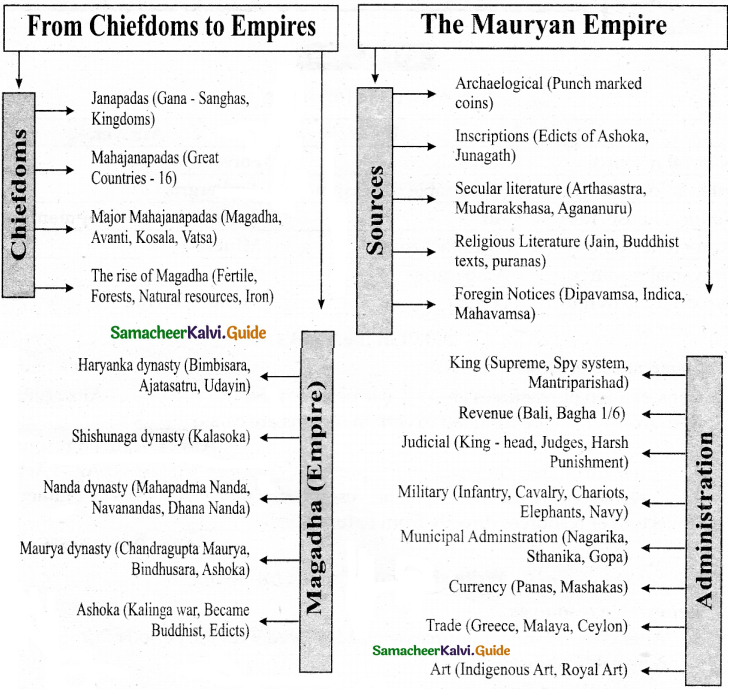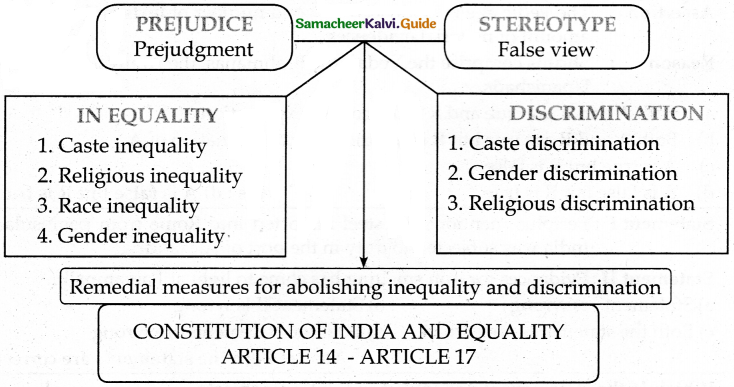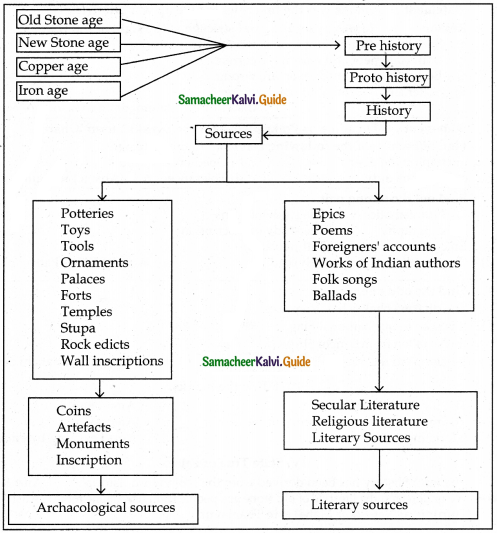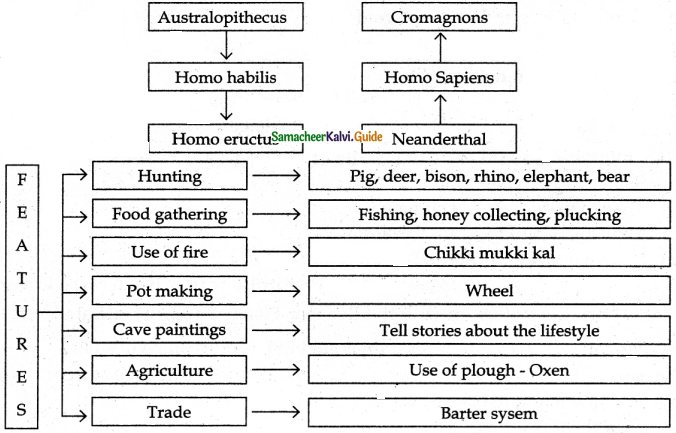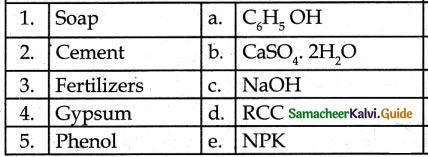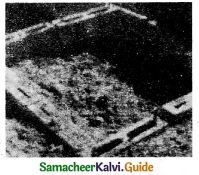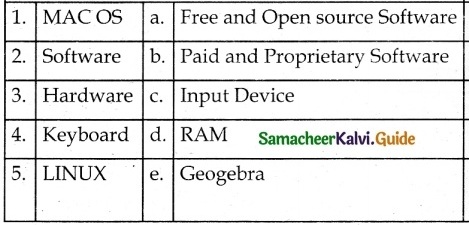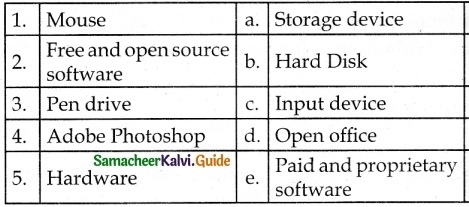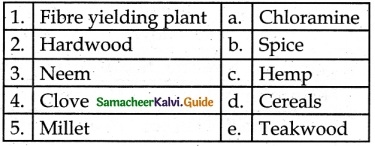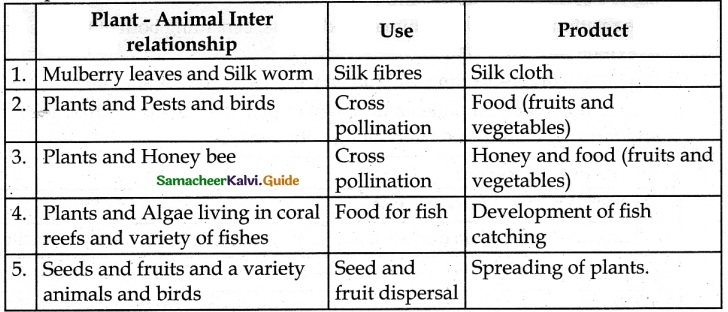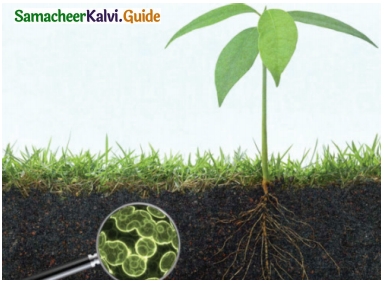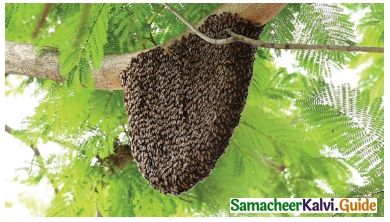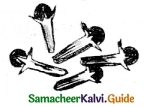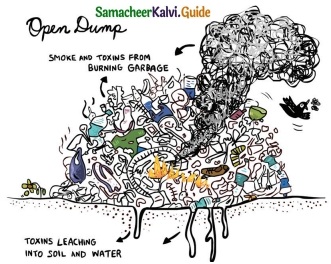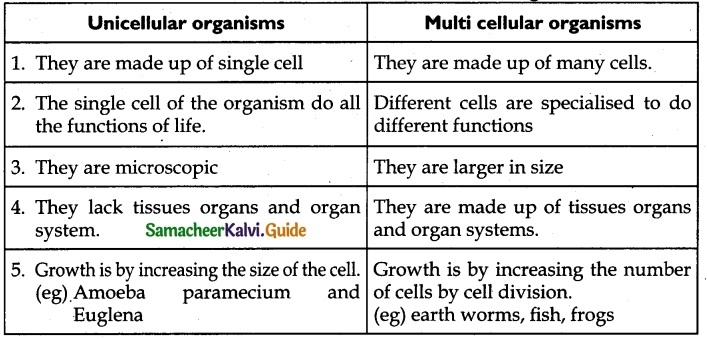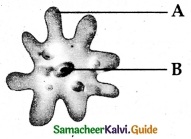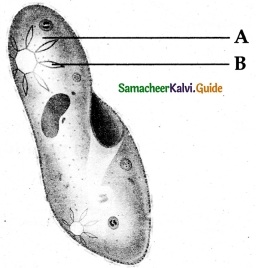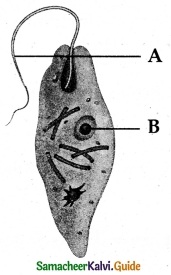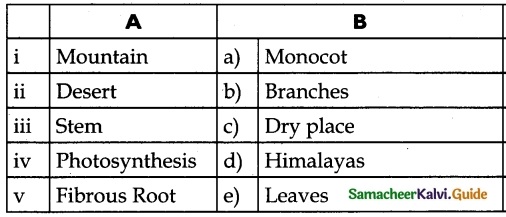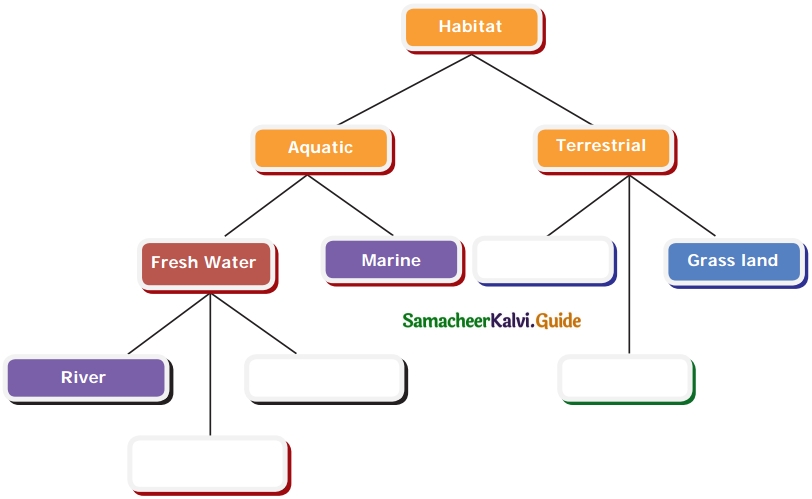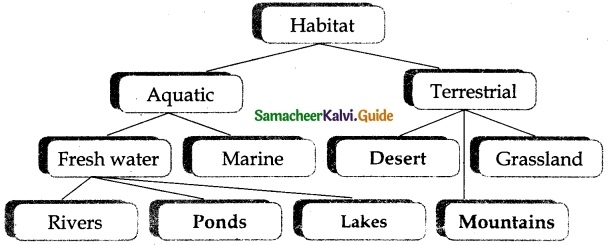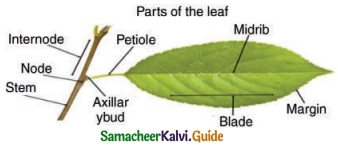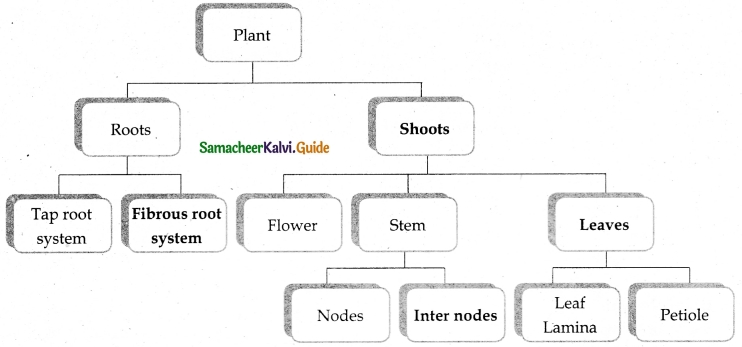Students can download 6th Social Science Term 2 History Chapter 3 From Chiefdoms to Empires Questions and Answers, Notes, Samacheer Kalvi 6th Social Science Guide Pdf helps you to revise the complete Tamilnadu State Board New Syllabus, helps students complete homework assignments and to score high marks in board exams.
Tamilnadu Samacheer Kalvi 6th Social Science History Solutions Term 2 Chapter 3 From Chiefdoms to Empires
Samacheer Kalvi 6th Social Science From Chiefdoms to Empires Text Book Back Questions and Answers
I. Choose the correct answer
Question 1.
The Kingdom which was most powerful among the four Mahajanapadas …………….
(a) Anga
(b) Magadha
(c) Kosala
(d) Vajji
Answer:
(b) Magadha
Question 2.
Among the following who was the contemporary of Gautama Buddha?
(a) Ajatasatru
(b) Bindusara
(c) Padmanabha Nanda
(d) Brihadratha
Answer:
(a) Ajatasatru
![]()
Question 3.
Which of the following are the sources of Mauryan period?
(a) Artha Sastra
(b) Indica
(c) Mudrafakshasa
(d) All
Answer:
(d) All
Question 4.
Chandra Gupta Maurya abdicated the thrown and went to Sravanbelgola along with Jina Saint ; .
(a) Badrabahu
(b) Stulabahu
(c) Parswanatha
(d) Rushabhanatha
Answer:
(a) Badrabahu
Question 5.
……………. was the ambassador of Seleucus Nicator.
(a) Ptolemy
(b) Kautilya
(c) Xerxes
(d) Megasthenese
Answer:
(d) Megasthenese
Question 6.
Who was the last emperor of the Mauryan Dynasty?
(a) Chandragupta Maurya
(b) Ashoka
(c) Brihadratha
(d) Bindusara
Answer:
(c) Brihadratha
II. Match the Statement with the reason/ Tick the appropriate answer
Question 1.
Statement (A) : Ashoka is considered as one of India’s greatest rulers.
Reason (R) : He ruled according to the principle of Dhamma.
(a) Both A and R are true and R is the correct explanation of A.
(b) Both A and R are true but R is not the correct explanation of A.
(c) A is true but R is false
(d) A is false but R is true
Answer:
(b) Both A and R are true but R is not the correct explanation of A
![]()
Question 2.
Which of the statements given below is/are correct?
Statement 1 : Chandragupta Maurya was the first ruler who unified entire India under one political unit.
Statement 2 : The Arthashastra provides information about the Mauryan administration.
(a) only 1
(b) only 2
(c) both 1 and 2
(d) neither 1 nor 2
Answer:
(b) only 2
Question 3.
Consider the following statements and find out which of the following statement(s) is/are correct.
1. Chandragupta Maurya was the first king of Magadha.
2. Rajagriha was the capital of Magadha.
(a) only 1
(b) only 2
(c) both 1 and 2
(d) neither 1 nor 2
Answer:
(c) both 1 and 2
![]()
Question 4.
Arrange the following dynasties in chronological order.
(a) Nanda – Sishunaga – Haryanka – Maurya
(b) Nanda – Sishunaga – Maurya – Haryanka
(c) Haryanka – Sishunaga – Nanda – Maurya
(d) Sishunaga – Maurya – Nanda – Haryanka
Answer:
(c) Haryanka – Sishunaga – Nanda – Maurya
Question 5.
Which of the following factors contributed to the rise of Magadhan Empire?
(1) Strategic location
(2)Thick forest supplied timber and elephant
(3) Control over sea
(4) Availability of rich deposits of iron ores
(a) 1, 2 and 3 only
(b) 3 and 4 only
(c) 1, 2 and 4 only
(d) All of these
Answer:
(c) 1,2 and 4 only
III. Fill in the blanks
- …………….. was the earliest capital of Magadha.
- Mudrarakshasa was written by …………….
- ……………. was the son of Bindusara.
- The founder of the Maurya Empire was …………….
- ……………. were appointed to spread Dhamma all over the empire.
Answer:
- Rajagriha
- Visakadatta
- Ashoka
- Chandragupta Maurya
- Dhamma – mahamattas
IV. State True or False
- The tittle Devanam Piya was given to Chandragupta Maurya.
- Ashoka gave up war after his defeat in Kalinga.
- Ashoka’s Dhamma was based on the principle of Buddhism.
- The lions on the currency notes is taken from the Rampurwa bull capital.
- Buddha’s relics were placed in the centre of the Stupas.
Answer:
- False
- False
- True
- False
- True
V. Match the following


Answer:
(a) 3 4 1 2
VI. Answer in one or two sentences
Question 1.
Mention any two literary sources of the Mauryan period.
Answer:
- Secular Literature
- Religious Literature: Vedic, Jain, Buddhist texts and Puranas
Question 2.
What is a stupa?
- A Stupa is a semi-spherical dome-like structure constructed on brick or stone.
- The Buddha’s relics were placed in the centre of the dome.
![]()
Question 3.
Name the dynasties of Magadha.
Answer:
Four dynasties ruled over Magadha Empire.
- The Haryanka dynasty
- The Shishunaga dynasty
- The Nanda dynasty
- The Maurya dynasty
Question 4.
What were the sources of revenue during the Mauryan period?
Answer:
(i) The land was the most important source of revenue for the state. Ashokan inscription at Lumbini mentions Bali and bagha as taxes collected from people. The land tax (Bhaga) collected was 1/6 of the total produce.
(ii) Revenue from taxes on forests, mines, salt, and irrigation provided additional revenue to the government.
Question 5.
Who assisted Nagarika in the administration of towns?
Answer:
Sthanika and Gopa assisted Nagarika in the administration of towns.
![]()
Question 6.
What do you know from the Rock Edicts II and XIII of Ashoka?
Answer:
- The horror of the Kalinga war was described by the king himself in the Rock Edict XIII.
- The Rock Edicts II and XIII of Ashoka refer to the names of the three dynasties namely Pandyas, Cholas, the Keralaputras, and the Sathyaputras.
Question 7.
Which classical Tamil poetic works have the reference of Mauryans?
Answer:
Mamulahar’s poem in Agananuru gives the reference of the Mauryans.
VII. Answer the following
Question 1.
What did Ashoka do to spread Buddhism? (Write any three points)
Answer:
- Ashoka sent his son Mahinda and daughter Sanghamitta to Srilanka to propagate Buddhism.
- He also sent missionaries to West Asia, Egypt, and Eastern Europe to spread the message of Dhamma.
- The Dhamma-mahamattas was a new cadre of officials created by Ashoka.
- Their job was to spread dhamma all over the empire.
- Ashoka held the third Buddhist council at his capital pataliputra.
Question 2.
Write any Hire causes for the rise off Mapdk
Answer:
The Causes for the Rise of Magadha
- Magadha was located on the lower part of the Gangetic plain.
- The plain was fertile which ensured the rich agricultural yield.
- This provided regular and substantial income to the state.
- The thick forests supplied timber for the construction of buildings and elephants for the army.
- The abundance of natural resources especially iron enabled them to equip themselves with weapons made of iron.
VIII. HOTS
Question 1.
Kalinga war became a turning point in Ashoka’s life. How?
Answer:
- In the war of Kalinga, many people died.
- He understood that war only brings destruction to families.
- The Kalinga war had incredible influence over the personal life and policy of Ashoka.
- Hence Kalinga war proved to be a turning point in the life of Ashoka.
- He found his consolation in Buddhism.
- He was representing for his deeds. He embraced Buddhism and took the vow of inculcation ‘Dhamma’ to all men throughout his life.
- He gave up the policy of Dig Vijay and adopted the policy of Dharma Vijay.
![]()
Question 2.
Write any five welfare measures you would do If you were a Mug like Ashoka?
Answer:
If I were a king like Ashoka
- First I would have taken proper steps to help the cultivations, especially storing j the excess water available in rainy season for agriculture.
- Monetary compensation would have been given during natural calamities.
- Child protection act would be passed very effectively.
- Stringent punishments would be given against corruption.
- Suggestions would have been taken from the general public for quality improvement.
IX. Picture Study
This is the picture of Ashokan edicts.
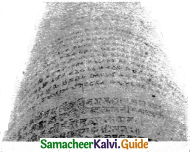
Question a.
What are edicts?
Answer:
Edicts are official proclamations issued by authority or a king.
Question b.
How are Ashokan edicts useful?
Answer:
Ashokan edicts showed his belief in peace, righteousness, justice, and his concern for the welfare of his people.
Question c.
Where were these edicts inscribed?
Answer:
Edicts were inscribed on the pillars, boulders and cave walls.
![]()
Question d.
Name the script used in Sanchi Inscription.
Answer:
Brahmi
Question e.
How many Rock Edicts are there?
Answer:
33 Edicts
X. Who am I
Question 1.
I belonged to Haryanka dynasty. I extended territory by matrimonial alliances. My son is Ajatasatru – Who am I?
Answer:
Bimbisara
Question 2.
I played a significant role in the transformation of society. I am used to making ploughshare – Who am I?
Answer:
Iron
Question 3.
I was known as Devanampiya. I embraced the path of peace – Who am I?
Answer:
Ashoka
![]()
Question 4.
I established the first largest empire in India. I performed Sallekhana – Who am I?
Answer:
Chandragupta Maurya.
Question 5.
I am found in the Lion Capital of Ashoka. I am at the centre of our national flag – Who am I?
Answer:
The Ashoka Chakra
XI. Decipher the code – The Mauryan Empire

Answer:
- The first dynasty that ruled over Magadha was ……………… (8, 1, 18, 25, 1, 14, 11, 1)
- ………………empire was the first largest empire. (13, 1, 21, 18, 25, 1)
- ……………… laid the foundation of the new capital at Pataliputra. (21, 4, 1, 25, 9, 14)
- ……………… was one of the main exports (19, 16, 9, 3, 5, 19)
- ……………… bacame later the most renowned seat of learning. (14, 1, 12, 1, 14, 4, 1)
- Revenue from agricultural produce was called ……………… (2, 8, 1, 7, 1)
- The horror of war was described in ……………… (18, 15, 3, 11, 5, 4, 9, 3, 20)
- Greeks called Bindusara as ……………… (1, 13, 9, 20, 18, 1, 7, 1, 20, 8.1)
- The crowning element in Saranath Pillar is ……………… (4, 8, 1, 18, 13, 1, 3, 8, 1, 11, 18, 1)
- Council of ministers were known as ……………… (13, 1, 14, 4, 18, 9, 16, 1, 18, 9, 19, 8, 1, 4)
Answer:
- Haryanka
- Maurya
- Udayin
- Spices
- Nalanda
- Rhaga
- Rockedict
- Amitragatha
- Dharma Chakra
- Mantriparishad
XII. Activity (For Students)
- Field trip to Museum
- Movie show – about Ashoka and Chandragupta
XIV. Life Skill (For Students)
- Make a model of Ashoka Chakra
- Make a model of Sanchi Stupa
- Draw and colour our National Flag.
XV. Answer Grid
Question 1.
Name the two kinds of government in North India during 6th century B.C. (BCE)
Answer:
Gana – Sanghas and Kingdoms
Question 2.
Who conducted second Buddhist Council at Vaishali?
Answer:
Kalasoka
Question 3.
What is the modern name for Kalinga?
Answer:
Odisha
![]()
Question 4.
Town was administrated by …………….
Answer:
Nagarika
Question 5.
Where was the third Buddhist council convened by Ashoka?
Answer:
Pataliputra
Question 6.
Name any two major Mahajanapadas.
Answer:
Magadha, Avanti
Question 7.
Which inscription records the Construction of Sudarshana lake?
Answer:
Junagath Girnar
Question 8.
Who was the last Nanda ruler?
Answer:
Dhana Nanda Maurian period.
Question 9.
Name the silver coin which was in use during the Mauryan Period.
Answer:
Panas
Samacheer Kalvi 6th Social Science From Chiefdoms to Empires Additional Important Questions and Answers
I. Choose the correct answer
Question 1.
Mahajanapadas dotted the Indo – Gangetic plain in sixth century BC.
(a) Ten
(b) Fourteen
(c) Sixteen
(d) eighteen
Answer:
(c) Sixteen
Question 2.
Kosala, one of the Mahajanapadas belonged to
(a) Eastern Uttar Pradesh
(b) Allahabad
(c) Bihar
(d) Ujjain
Answer:
(a) Eastern Uttar Pradesh
![]()
Question 3.
The horror of the Kalinga war was described in the Rock Edict …………….
(a) X
(b) XI
(c) XII
(d) XIII
Answer:
(d) XIII
Question 4.
The Source of information about the Mauryan Empire is from
(a) Puranas
(b) Edicts of Ashoka
(c) Bihar
(d) All of the above
Answer:
(d) All of the above
II. Match the statement with the Reason / Tick the appropriate answer
Question 1.
Statement (A) : Magadha’s gradual rise to political supremacy began with Bimbisara.
Reason (R) : Bimbisara extended the territory by conquests and matrimonial alliances.
(a) A is true but R is false
(b) A is false but R is true
(c) Both A and R are true
(d) Both A and R are false
Answer:
(c) Both A and R are true
Question 2.
Consider the following statements and find out which of the following statement(s) is/are correct.
(1) Board of 40 members divided into eight committees. Each had 5 members to manage the administration of the city.
(2) Town administration was under Nagarika.
(a) only 1
(b) only 2
(c) both 1 and 2
(d) neither 1 nor 2
Answer:
(b) only 2
III. Fill in the blanks
- Chandragupta Maury a overthrew …………….
- ……………. convened the first Buddhist council at Rajagriha.
- The meaning of ……………. is explained in Ashoka’s – Pillar Edict II.
- Council of ministers known as ……………. assisted the King.
Answer:
- Dhana Nanda
- Ajatasatru
- Dhamma
- Mantriparishad
IV. State True or False
- Gold played a significant role in this transformation of society.
- Magadha was located on the lower part of the Gangetic plain.
- Mahapadma Nanda and his eight sons were known as Navanandas.
- Ashoka held the third Buddist council at Kashmir.
Answer:
- False
- True
- True
- False
V. Match the following


Answer:
b) 4 3 2 1
VI. Answer in one or two sentences
Question 1.
What were the two kinds of government in North India during the sixth century BC?
Answer:
- Gana – Sanghas (Non-monarchical states)
- Kingdoms (Monarchies)
Question 2.
How were Mahajanapadas formed?
Answer:
- Janapadas were the earliest gathering places of men.
- Later, Janapadas became republics or smaller kingdoms. The widespread use of iron in the Gangetic plain created conditions for the formation of larger territorial^ units transforming the janapadas into Mahajanapadas.
![]()
Question 3.
What did Ashoka lay stress on?
Answer:
- Compassion
- Charity
- Purity
- Saintliness
- Self – control
- Truthfulness
- Obedience and respect
VII. Answer the following
Question 1.
Give reasons for the decline of the Mauryan Empire.
Answer:
- Ashoka’s successors were very weak.
- Continuous revolts in different parts of the empire.
- Invasion by the Bactrian Greeks weakened the empire.
- Last Maurya ruler Brihadratha was killed by his commander Pushyamitra Sungha.
- He established the Sungha dynasty.
Question 2.
What do you know about the Royal Art of Mauryan?
Answer:
Royal Art consists of palaces and public buildings, Monolithic pillars, Rock-cut Architecture and Stupas.
Stupas:
- It is a semicircle dome constructed on brick or stone.
- The Buddha’s relics were placed in the centre.
- We can see the stupa at Sanchi near Bhopal.
Monolithic Pillar:
- The crowning element in this pillar is ‘Dharma Chakra’.
- We can see the pillar at Samath.
Rock cut Architecture:
- Rock cut caves are in Barabar hills and Nagarjuna hills
- They are to the north of Bodh Gaya.
- 3 caves in Barabar hills have Ashoka’s inscriptions.
- 3 caves in Nagarjuna hills have Dasharatha Maurya’s inscriptions, (grandson of Ashoka).
VII. Mind map
